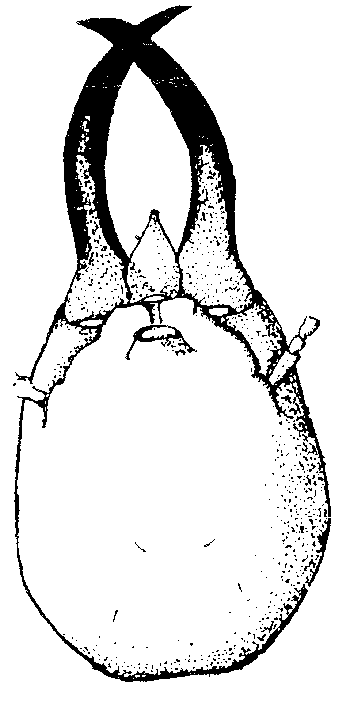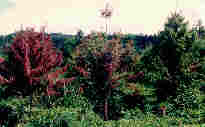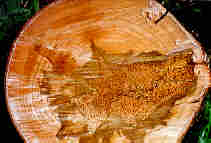Identification: Coptotermes elisae soldiers are mandibulate; upon disturbance the soldiers emit a milky exudate through a hole in the fontanelle of their head
Host Species: Araucaria cunninghamii, A.
hunsteinii and other hosts
of any age
Effects on Host: Coptotermes elisae
(Desneux) termites enter the host through
injured roots or injured bark and then tunnel the cambium
and the heart of the tree. The termites
eat the wood of dead and living trees causing
host’s death
Type of Nest: subterranean nest
Economic Significance: very severe pest

head of a Coptotermes elisae soldier
(reproduced from CSIRO, 1991²)
- ‘mud-packs’ cover the base of the stem

- the leaves wilt and their colour changes from green to yellow and brown from the top of the tree downwards and from the tips of the branches inwards

- the upper crown is more or less defoliated
- due to the ‘pipe’-like excavated base of the tree, a hollow sound is audible when the stem is tapped

- the cross section of the stem and sawn timber show typical irregular galleries that are often filled with frass and other decaying material

- occlusion might cover the damaged area of the bark, so that it is no longer visible after a time, even though the termites are still present